“Tron: Ares” Cinematographer Jeff Cronenweth on Shooting IMAX, Practical Effects, and Nine Inch Nails’ Influence
The third installment in the Tron series, which broke new ground in 1982 with a film set in the digital world, sees AI beings cross over from the grid into the physical realm. Directed by Joachim Rønning, Tron: Ares stars Jared Leto as Ares, an AI soldier generatively laser printed by Dillinger scion Julian Dillinger (Evan Peters) to take on rival corporation Encom. Encom CEO Eve Kim (Greta Lee) has cracked the permanence code, which would allow figures like Ares, or any living entity hatched via AI, to make the leap from virtual reality to the human world and survive.
But Eve breaks the hard drive holding the permanence code and chucks it into the harbor, and Julian adapts, with a new directive to capture Eve herself and extract the code within the Dillinger grid. Ares rebels, and the corporate rivalry turns into a furious chase from one world to the next. Set to a hammering techno score by Nine Inch Nails, Tron: Ares leaps between human and virtual reality, where different spheres are defined by color—red for Dillinger, white for Encom, and finally, the blues and purples of original Tron programmer Kevin Flynn’s (Jeff Bridges) 1980s-inflected grid.
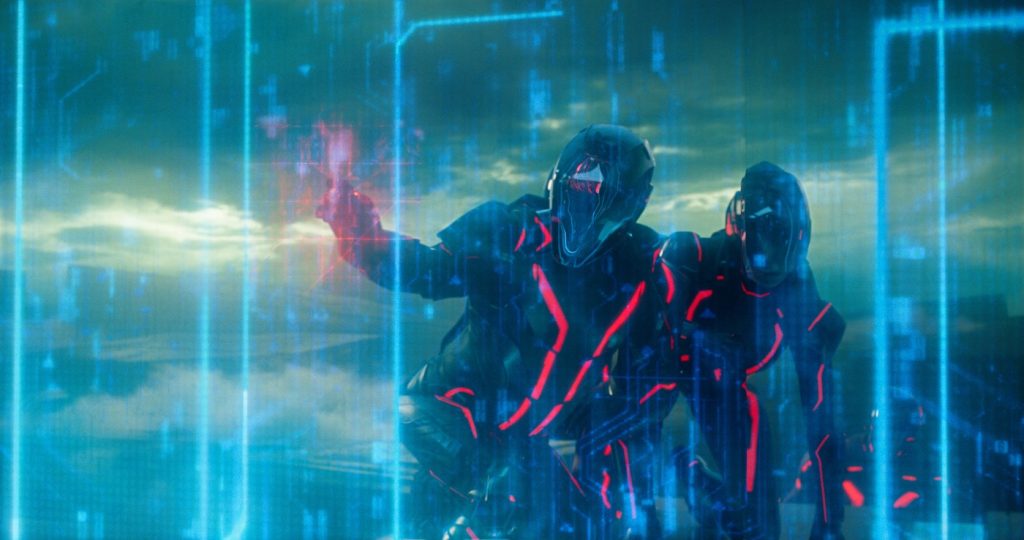
Cinematographer Jeff Cronenweth, whose range of credits includes The Social Network, Fight Club, and music videos for David Bowie, Lady Gaga, and Taylor Swift, among many others, collaborated with the visual effects team on an overlapping effort to get the film’s stunning visual effects on screen. We had the chance to speak with Cronenweth about that process, as well as shooting for IMAX, filming surprising sequences practically, and pushing the imagery in new directions based on the NIN score to come.
How did you first approach the cinematography, in terms of delineating the real world from the system worlds?
You look back at the history of the Tron franchise, and you see where it evolved from. There’s this clinical, mechanical precision to the grid. That was a great starting point for me, to go into it knowing that the world would be so different from the real world. Other than the end of Legacy, this is the first time they have ever spent any time in the real world. The real world is based on all the imperfections of humanity, and so it was a wonderful balance between precision and imprecision. We had three grids, Encom, Dillinger, and Flynn. You take those three worlds and make them different, but all within this controlled precision, and then you get into the grittiness of the real world.
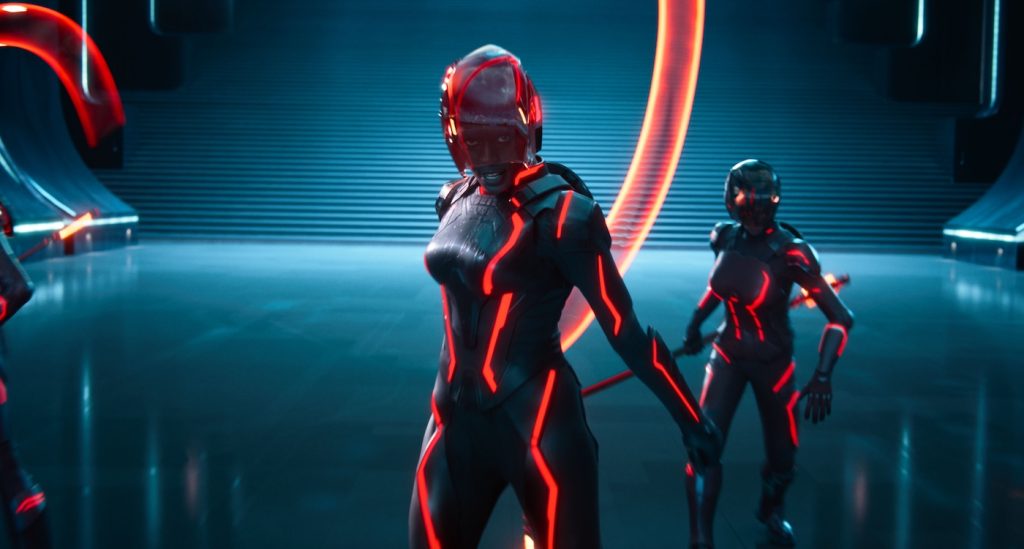
The different worlds were really defined by color. How did that apply to the cinematography?
In a way, that was established in Legacy and the original 1982 film. Red was not the world of the good guys, and white or blue was the Flynn world, which was the world of the good guys. In a way, it was our black hat versus white hat. The thing we got to add was the Encom grid. The Flynn grid was desaturated and added quite a bit of grain to emulate the limitations of the technology available in 1982.
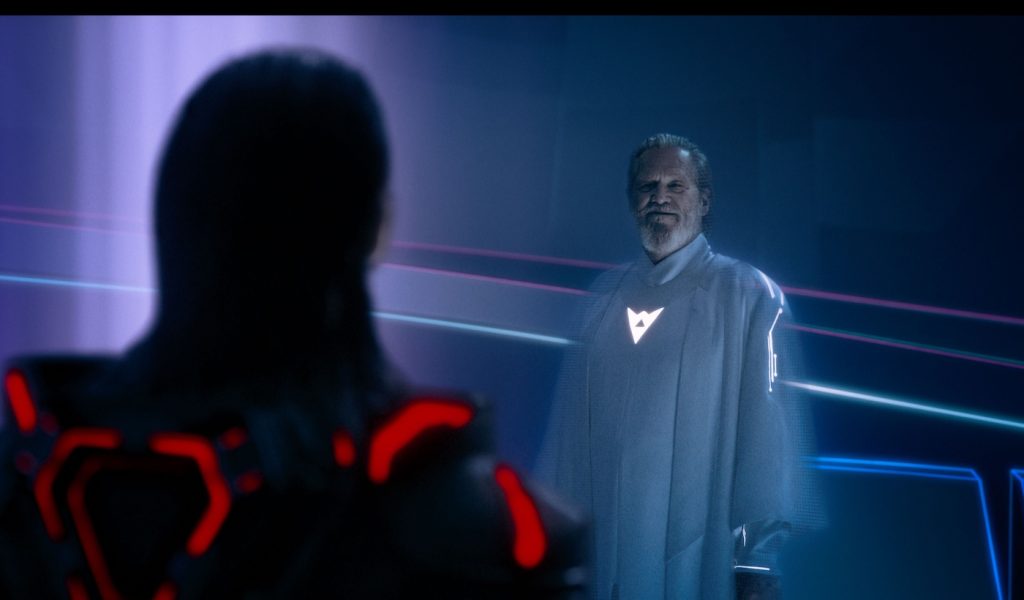
In a film like this, where so much relies on visual effects, how does that affect your process?
I had a very generous amount of time for preparation on this movie. There was so much to be resolved. The explorations of these worlds were still coming to fruition, and even though there were maps of what it should be and renderings of what we wanted, there were still so many choices to be made and so many sets that incorporated a lot of different types of interactive lights. It was really nice that we had that time to work our way through and eventually get to what you saw.
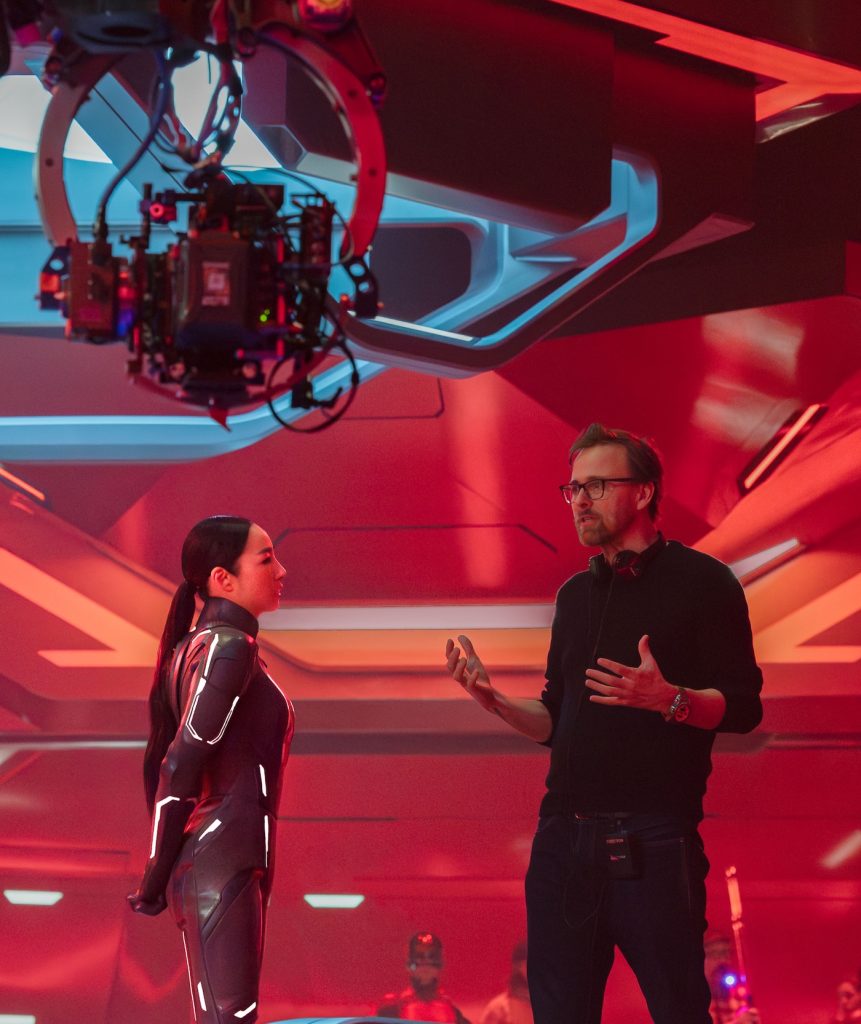
Were there practical elements that might surprise audiences?
A lot of the chase sequence was more practical than you’d think it would be. All the stuff that was on Eve’s bike, before she got on the light cycle, was actually on the bike, and we were chasing her through the streets of Vancouver. Once she’s on the light bike, some of the interaction was done on stage, but a lot of it was the light bikes being towed on trailers and interacting with the all the light sources in the real world.
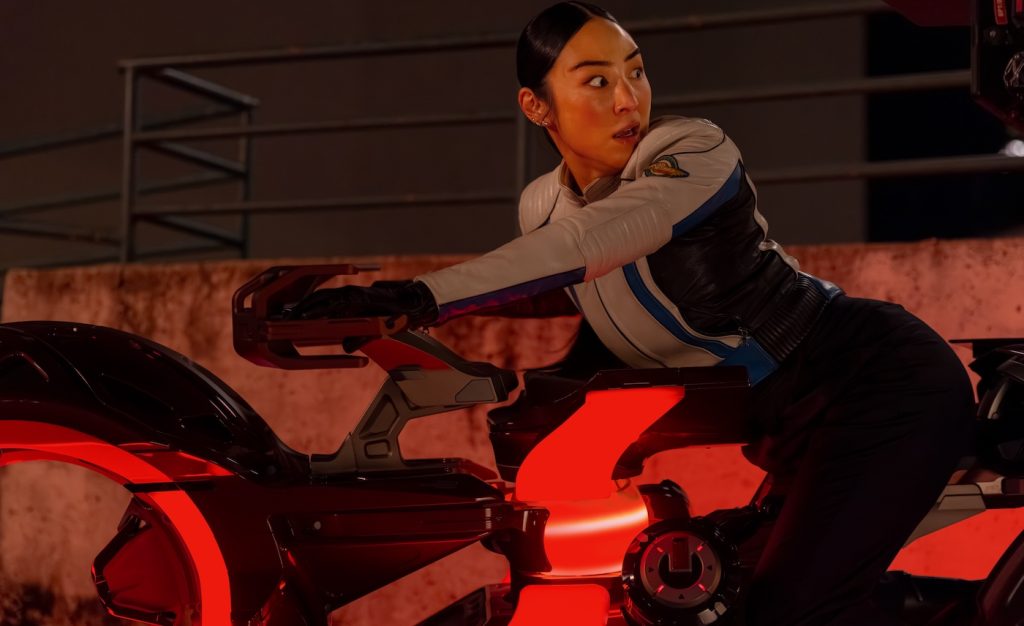
For a film like this, do you experiment with different lenses? Or did you come in with a pretty well-set toolkit?
I think it’s both. For us, Joachim and I both thought it would be best represented anamorphically, but when IMAX showed interest in displaying it, that changed the parameters. You can’t shoot on anamorphic, so we embraced the 2.39:1 aspect ratio and went with spherical glass. I had really great success with Being the Ricardos using the RED cinema camera with the ARRI DNA large format lenses, or I would have used the regular spherical lenses. We combined them together, and they created a special mount for me that hadn’t been done before, to accommodate the RED camera with the DNA large-format lenses. Oftentimes, they don’t mind if you change formats during the show, as long as 40% is presented in IMAX, but we didn’t want the audience to have that experience. So we left room for the 1.90:1 but really composed for the 2.39:1. The DNA lenses have interesting personalities and have inherent artifacting that adds different nuances. Even though the worlds were clinical, I didn’t want the optics to be as clinical.
What were some of those specific characteristics?
The way they flare, the way they react to halations, the way they fall off, they’re tunable; you can adjust them to whatever your preference is. We brought the center of sharpness out to the edges a little bit more, which allowed us to then compose people on both extremes of a frame without losing focus on them. They maintain interesting flares and bits of distortion here and there. They really are friendly to faces.
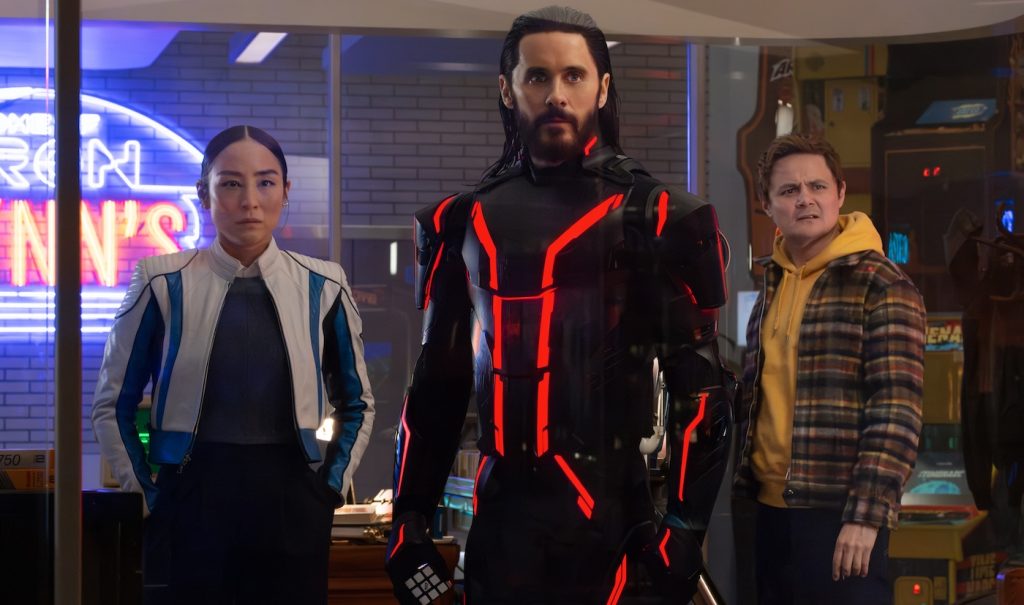
Did your extensive experience shooting music videos play into your approach to Tron: Ares?
Only from the standpoint of once Nine Inch Nails had committed to this film, and we talked about the kind of tracks [they would do]. I’ve shot music videos for Nine Inch Nails many years ago. My brother and I directed some Batman: Arkham video game commercials, and Trent [Reznor] wrote the score for that commercial. As you know, The Social Network was the first one they composed, and I photographed The Social Network. And then they did Dragoon Tattoo, and so many movies since then. So I’m really familiar with their music. When Disney came back to us and said they’d signed Nine Inch Nails to do it, you know there was going to be more reverb, more bass, more aggression, and the studio’s attitude changed quite a bit about how much more we could push the imagery, especially in the real world, to contrast the grids of the digital world.
Tron: Ares is in theaters now.

